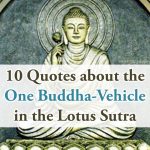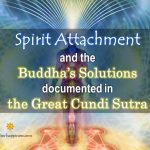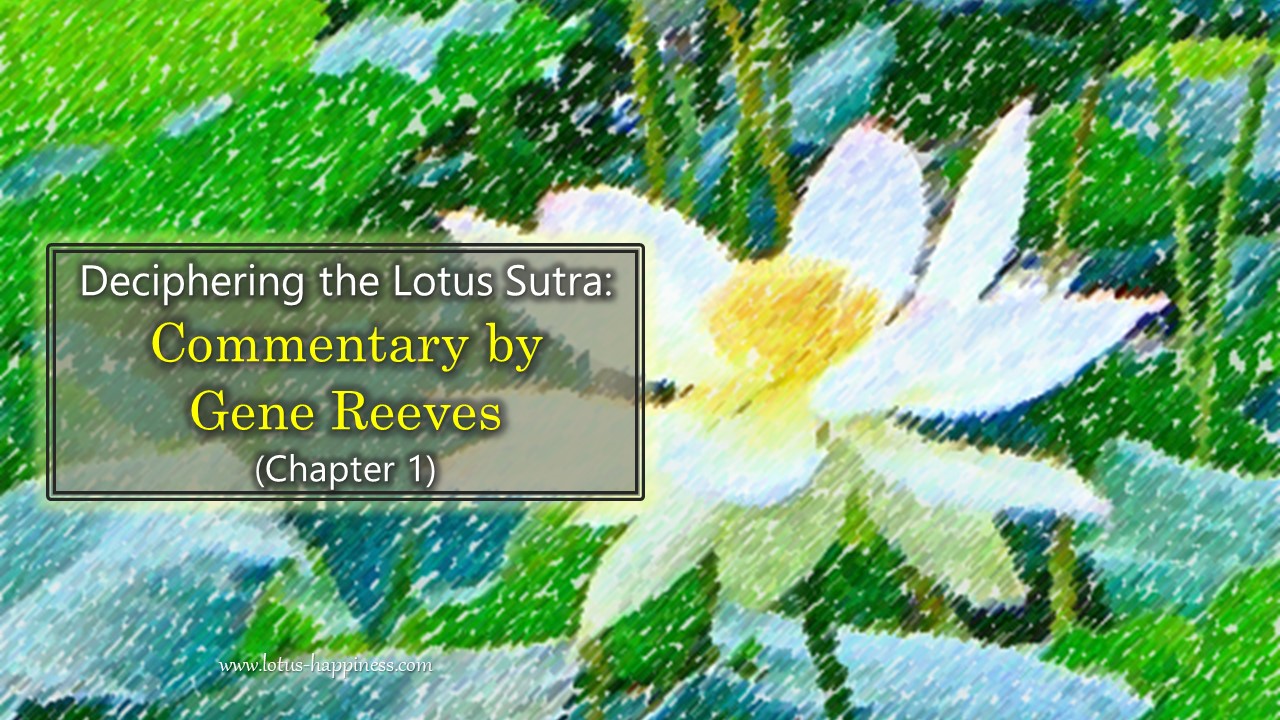The Five Vehicles and One Buddha-Vehicle
People vary in their background, interests, levels of understanding, sharpness in mind, and objectives in studying Buddhism. Therefore there is no single school of teaching to satisfy all.
- For those who cannot understand the sagely and ultimate Dharma, Buddha dharma provides them with the convenience to avoid their falling into the three lowest realms, i.e. Three Evil Paths.
- For those who can understand, but not courageous enough to undertake in practice, Buddha dharma provides guidance to achieve enlightenment progressively.
- Buddha dharma facilitates by all means all sentient beings to do all kinds of good things. In Buddhism, no sentient beings cannot be enlightened, as all sentient beings possess the Buddhist characters.
We will not teach people something which they do not understand. The teacher will not answer the student’s question if he knows that the student does not understand. However, a good teacher will give a simplified, but not necessarily exact answer which will lead eventually to the understanding of the real answer.
In Buddhism, there are Five Vehicles. A Vehicle is a transportation means to carry people across the sea of suffering to reach the shore of enlightement. The Five Vehicles are:
- Human
- Deva
- Sravaka (Sound Hearer)
- Praetyka-Buddha (Those enlightened to conditions)
- Bodhisattva
The first two are sometimes taken as one, i.e. Human and Deva Vehicles. The third and fourth combined is called the Liberated Vehicle. The Liberated Vehicle together with the Bodhisattva Vehicle are known as the Three Vehicles.
The Liberated Vehicle is known as Hinayana, or The Small Vehicle. It means a small vehicle for a person to carry oneself across the sea of suffering and to attain the enlightement. On the other hand, the Bodhisattva Vehicle is known as Mahayana, or The Great Vehicle. i It means a great vehicle for many people to cross over, not just for oneself.
Buddhist Teaching, Theory, Practice and Attainment
#1 – The Human & #2 – Deva Vehicles
Theory
To show the inevitability of the cause and effect of good and evil karma, like the shadow following its form, with retribution to the doer himself. With the good or evil karma, there is transmigration among the six states of existence and if one wishes to seek the fruit of happiness, one must accumulate good deeds and shun all evil.
Practice
To bind and control one’s behavior. Cease all evil, do all that is good, be filial to one’s parents, respect one’s teachers and elders, receive and observe the Five Precepts, cultivate the Ten Good Deeds, be kind and philanthropic, and broadly cultivate the fields of blessings.
Attainment
Good karma breeds good fruits, the blessings of humans and devas. Evil karma breeds evil fruits, the degeneration into the three evil paths. In this mortal world, the fruits of retribution are impermanent and after they are exhausted, they again follow their transmigration among the six states.
#3 – The Sravaka & #4 – Praetyka-Buddha Vehicles
Theory
They thoroughly understand the impermanence, egolessness, dependent origination nature and nirvana of all dharmas. The continuation of the life and death cycle never ends, due to the clinging to, and attachment of, selfhood.
Practice
To practise diligently the Sila (Precepts), Dhyana (Concentration) and Prajna (Wisdom) in order to counteract Desire, Anger and Ignorance. The fear in the sufferings of samsara urgently results in seeking emancipation. But this practice is capable of only self salvation and not others.
Attainment
Exterminate the troubles arising from views and thoughts of the Three Realms, and attain out-of-worldly emancipation and nirvana. No longer subject to bondage by further life-and-death cycles, but their wisdom is still insignificant. They thought they have attained enough and in order to protect what they have achieved, they dwell in the void, look upon the Three Realms as jail, and all sentient beings as their opponents. They dare not develop bodhicitta to descend on the world to save all beings.
#5 – The Bodhisattva Vehicle
Theory
Aware that the Three Realms exist in the mind and that all dharmas are within our consciousness. There is no dharma outside the mind and there is no mind outside the dharma. Form is no different from emptiness and its nature never changes with any circumstance. Emptiness is no different from form, and the unchangeable nature goes along with any circumstance without being affected. Form and emptiness are non-dualistic, hence substance and function are interfused. The mind, the Buddha, and sentient beings, all three are one and the same, hence all sentient beings have Buddha nature and can all attain Buddhahood.
Practice
They put into effect their great vows of seeking Buddhahood and transforming beings. With transcendental wisdom, they understand that there are no beings to be saved and no Buddhahood to be attained, but owing to their great compassion, they often remain in the stream of life and death to relieve suffering and give happiness to all beings without let-up on any one being.
Attainment
Permanently rid of the five basic afflictions, served of the two forms of death (physical and mental), the attainment of the Three Enlightenments, the possession of all virtues, the attainment to the very source of the mind and the four virtues of eternity, joy, personality and purity, having transformed consciousness into wisdom and attained the unsurpassed path.
One Buddha Vehicle
It seems that the Human and Deva Vehicles emphasize on existence, such as blessing, longevity, health and wealth, etc., while the Liberation Vehicle emphasizes on non-existence, even no-self.
It may seem that they are contradictory, but in fact, they are not. The Human and Deva Vehicles are the first step in Buddhism. If we can do all kinds of good deed for people at all times, our mind will be pure.
The Liberation Vehicle is controversial. How can a person who renounces all kinds of dependent origination and meditates alone all the times can benefit other people? It can be viewed in three ways:
- It is a process of purifying, i.e. to renounce all defilements in our mind.
- If we can stop thinking and doing all kinds of evil deed at all times, our mind is pure too!
- It is an indirect way to influence others towards kindness, e.g. starving in protest, silence is sometimes better than words!
Lastly, the Bodhisattva Vehicle is nearly perfect and ultimate in terms of Buddhism, as one will be benefited, liberated and realized by benefiting, liberating and realizing others.
Above all, the ultimate, perfect and complete truth of Buddha is One Buddha Vehicle. In Buddhism, the Five Vehicle are established to facilitate the human beings to understand the reality of Buddhahood. As revealed in the Lotus Sutra, the teaching of One Buddha Vehicle is inconceivable and beyond words.












